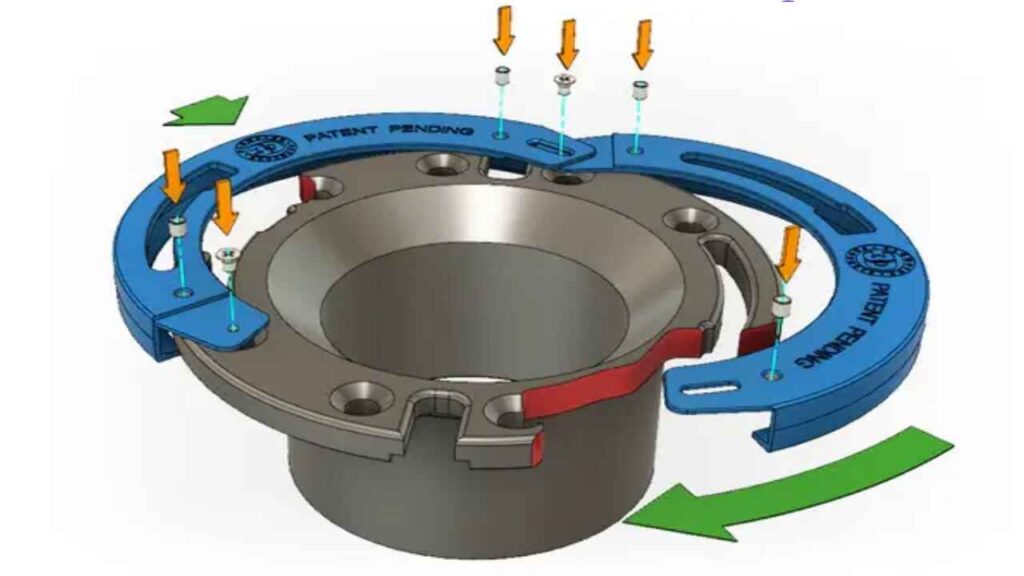
How to Replace Cast Iron Toilet Flange – Replacing a cast iron toilet flange is a crucial home repair task that ensures your toilet is securely anchored and prevents leaks. While cast iron flanges are durable, they can deteriorate over time due to rust and corrosion. If you find yourself needing to replace a cast iron toilet flange, follow these steps to ensure a successful repair.
1. Understanding the Replace Cast Iron Toilet Flange
A toilet flange is a critical component that connects the toilet to the floor and the drain pipe. Cast iron flanges were commonly used in older homes due to their durability, but they can rust and become brittle over time. Replacing a cast iron flange involves removing the old flange and installing a new one, which can often be made of PVC or stainless steel for better durability and resistance to corrosion.
2. Gather Your Tools and Materials
Before you start, ensure you have the following tools and materials:
- Replacement flange (PVC or stainless steel)
- Flange gasket
- Wax ring or wax-free toilet seal
- Socket wrench set
- Screwdriver
- Hammer
- Drill (if needed)
- Plumber’s putty (optional)
3. Prepare the Area
- Turn Off Water Supply: Locate the shut-off valve near the toilet and turn off the water supply. Flush the toilet to drain as much water from the tank and bowl as possible.
- Remove the Toilet: Carefully remove the toilet by unscrewing the nuts that secure it to the flange. Lift the toilet off the flange and set it aside on a protective surface.
- Remove Old Flange: Use a hammer and chisel or a flange removal tool to break apart and remove the old cast iron flange. Be cautious to avoid damaging the surrounding floor or plumbing.
4. Install the New Flange
- Prepare the Surface: Clean the area where the new flange will be installed. Ensure the floor and drain pipe are free of debris and old flange remnants.
- Position the New Flange: Place the new flange over the drain pipe. If you’re using a PVC flange, ensure it fits snugly over the pipe. For stainless steel flanges, ensure they align properly with the bolt holes on the toilet.
- Secure the Flange: Depending on the type of flange, you may need to drill new holes or use existing ones. Secure the flange to the floor with screws or bolts, ensuring it is level and tightly fastened.
- Install the Seal: Place a new wax ring or wax-free toilet seal on top of the flange. This creates a watertight seal between the flange and the toilet.
Also Read – Lowes Window Installation – Reviews, Cost, Warranty, Complaints, More
5. Reinstall the Toilet
- Position the Toilet: Carefully lower the toilet onto the new flange, aligning the bolts with the holes in the base of the toilet.
- Secure the Toilet: Tighten the nuts onto the bolts to secure the toilet. Be careful not to overtighten, as this can crack the porcelain.
- Reconnect the Water Supply: Turn the water supply back on and flush the toilet to check for leaks. Ensure the toilet is stable and there are no issues with the seal.
- Finish Up: If desired, apply plumber’s putty around the base of the toilet for a neat finish. Clean up the work area and dispose of the old flange properly.
Conclusion (Replace Cast Iron Toilet Flange)
Replace Cast Iron Toilet Flange requires some basic tools and a careful approach, but it’s a manageable DIY task with the right preparation. By following these steps, you ensure a secure and leak-free connection between your toilet and the drain pipe. If you encounter difficulties or if the project seems too complex, don’t hesitate to consult a professional plumber for assistance. A well-installed flange will contribute to the long-term functionality and safety of your toilet.





